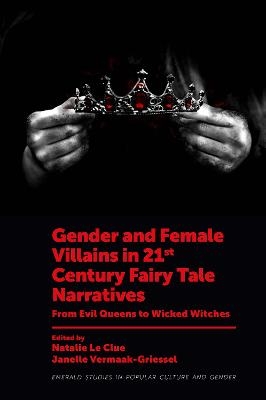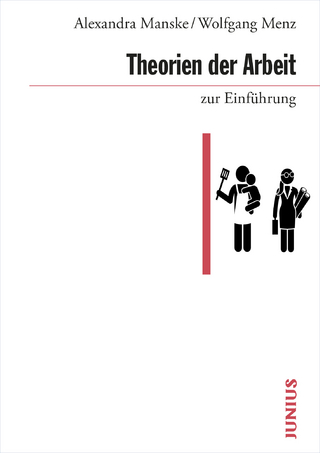
Gender and Female Villains in 21st Century Fairy Tale Narratives
Emerald Publishing Limited (Verlag)
978-1-80117-565-4 (ISBN)
Within the realm of fairy tale study, the characters of princess, prince, hero, and damsel in distress have been researched extensively, however the female villain has rarely been the central focus of academic study. Gender and Female Villains in 21st Century Fairy Tale Narratives: From Evil Queens to Wicked Witches features chapters from different academic disciplines such as television and film studies, fan studies, character analysis, gender studies, feminist studies and audience analysis. Through the primary lens of gender studies, the collection delves into issues such as vanity, body dysmorphia, femslash fandom, the lesbian gaze, the queering of the villain-hero dichotomy, and morality and femininity.
Concluding by looking into physical disability, maternal subversion, and social exclusion, as well as the construct of beauty 'ideals' as applied to female villains, this collection breaks fresh ground by putting the female villain at the centre of academic study.
Natalie Le Clue is currently teaching in the department of Media and Communication at Nelson Mandela University in Port Elizabeth, South Africa. Her research focuses on television studies with a particular emphasis on fan studies, fairy tale mythology, and elements of new media. Janelle Vermaak-Griessel is a Senior Lecturer in the Department of Media and Communication at the Nelson Mandela University, South Africa, and teaches in a varied range of disciplines including, but not limited to, scriptwriting, film Studies, communication studies and written communication.
Introduction; Natalie Le Clue and Janelle Vermaak-Griessel
Gender
Chapter 1. “‘To destroy. To hate. To sow seeds of chaos. You know, just girly things’”: Evil Queens, Femslash Fandom and Monstrous Happiness; Alice M. Kelly
Chapter 2. Scary Good: Queering the Villain-Hero Dichotomy in Contemporary Fairy Tale Retellings; Alba Morollón Díaz-Faes
Chapter 3. A Tale of Two Mothers: Recombining Villainy and Motherhood in Maleficent: Mistress of Evil (2019); Rebecca Rowe
Chapter 4. When the Magic Mirror Lies: Gender, Vanity, Body Dysmorphia, and the Wicked Queen; Sara Austin
Screen Narratives
Chapter 5. ‘Pretty ballads hide bastard truths’: Patriarchal Narratives and Female Power in Netflix's The Witcher; Kirsty Worrow
Chapter 6. Positioning Mrs. Coulter in BBC/HBO His Dark Materials; Giulia Bigongiari
Chapter 7. Female Power and Corruption: Snow White and the Evil Queen Through the Ages; Sarah Faber
Chapter 8. The Reimagined Female Villain in George R.R. Martin’s A Song of Ice and Fire; Amit Kardosh
Character Reformations
Chapter 9. The Stepmother Problem: How an Information Deficit in Film Creates Female Villains; Rebecca Gadd
Chapter 10. These Violent Delights’: Remodeling the fembot archetype in Ex Machina and Westworld; Kirsty Worrow
Chapter 11. The Fairest Evil Looming over Earth: Representations of the Evil Queen in 21st Century “Snow White” Adaptations; Svea Hundertmark
Chapter 12. “Evil isn’t born, it’s made”: Redefining the fairytale villain for contemporary television storytelling; Natalie Le Clue
Physicality
Chapter 13. Maimed Wings and Broken Hearts: Physical Disability, Social Exclusion, and Maternal Love in Disney's Maleficent and Maleficent: Mistress of Evil; Hannah Helm
Chapter 14. “Poor, unfortunate souls”: Fan Perception of Ursula the Sea Witch from Disney’s The Little Mermaid (1989); Janelle Vermaak-Griesse
Chapter 15. A Rhetoric of Evil: The clichéd motif of the Evil Queen; Natalie Le Clue and Janelle Vermaak-Griesse
Conclusion
| Erscheinungsdatum | 31.01.2022 |
|---|---|
| Reihe/Serie | Emerald Studies in Popular Culture and Gender |
| Verlagsort | Bingley |
| Sprache | englisch |
| Maße | 152 x 229 mm |
| Gewicht | 488 g |
| Themenwelt | Sozialwissenschaften ► Soziologie ► Mikrosoziologie |
| ISBN-10 | 1-80117-565-9 / 1801175659 |
| ISBN-13 | 978-1-80117-565-4 / 9781801175654 |
| Zustand | Neuware |
| Haben Sie eine Frage zum Produkt? |
aus dem Bereich


